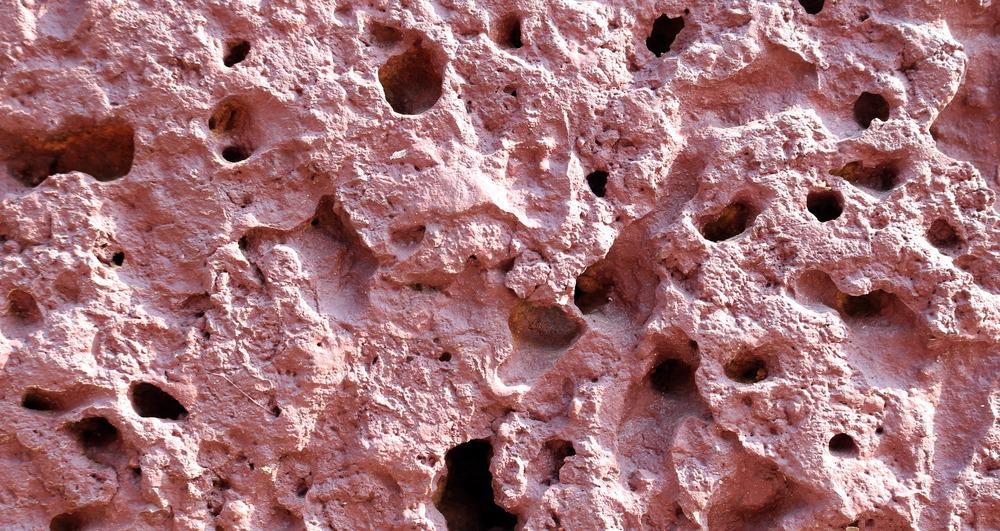Xnovotech has announced the release of new software for grain mapping technology: GrainMapper3D version 3.0. This version of the software will enable larger and more representative maps of grain orientations and morphologies in materials. This non-destructive imaging technique will enable correlation with complementary information on porosities and cracks.

Image Credit: plew koonyosying/Shutterstock.com
3D Crystallographic Imaging
X-ray crystallographic imaging is a technique used to determine the molecular structure of crystals. The crystalline structure causes the X-ray beams to diffract and a 3D picture of the density of electrons can be obtained by looking at the intensities and angles at which the beams have been diffracted. The positions of the atoms in the crystal can therefore be determined from the obtained electron density.
About Grain Mapping
Grain mapping is a non-destructive technique that produces maps of grain shapes and crystallographic orientations in polycrystalline materials in three dimensions. The imaging data is collected as the sample is rotated as a series of images containing diffraction spots are obtained.
The shape, size and orientation of grains and clusters of grains carry important implications about the properties of a material. However, it is difficult to study materials at this length scale and more experimental techniques and software for their analysis have to be developed and improved. One such software is the GrainMapper3D version 3.0 software developed by Xnovo Technology.
About the Xnovo
Xnovo technology is a Danish company that focuses on the development of 3D X-ray crystallography imaging technologies for scientists and engineers. It was founded in December 2012 by Senior Scientist Erik Mejdal Lauridsen and Professor Henning Friis Poulsen.
Erik Mejdal Lauridsen shares that traditionally not many laboratories have had access to synchrotron techniques and these techniques have only been available to a limited number of laboratories. The aim of Xnovo is to provide the opportunity to a wider range of companies and researchers to have access to 3D X-ray crystallographic imaging.
GrainMapper3D
GrainMapper3D provides non-invasive 3D imaging and can be purchased in a home laboratory. Having this technology in one’s own lab makes the logistics around taking measurements much simpler since no booking ahead is required.
GrainMapper3D provides instant feedback of the quality of the data collected and enable the analysis of the same material multiple times to investigate its behaviour under different external conditions.
The software allows the correlation of diffraction and absorption data to study defects in the material. Another advantage of this technique is that it can be applied to a wide range of materials from metals to pharmaceuticals.
How Does GrainMapper3D Version 3.0 Work?
There are six major steps within the work process of the GrainMapper3D version 3.0 – sample mounting, data collection, processing, reconstruction, obtaining results, and performing 4D evolution studies.
Firstly, the sample needs to be mounted and aligned so that the region of interest could be investigated. There are two sets of data that are collected – absorption contrast and diffraction contrast. The absorption contrast is used for sample outline while the diffraction contrast is used for grain map reconstruction.
After the data is available, the image processing is performed with the GrainMapper3D software which has a graphical user interface to go through a step-by-step process. The user has to choose the appropriate region of interest, separate the background noise from the signal, and choose optimal reconstruction parameters before the 3D reconstruction is launched.
The reconstruction is performed using an algorithm that finds a solution so that each grain is added to the preview in order to obtain a 3D map. When the map is obtained, the user can choose a way to visualize the map by using different colour coding, grain size and orientations.
After obtaining and visualizing the map for certain conditions, 4D evolution studies can be performed. This is done by repeating all the previous steps in different conditions to study how the behaviour of the material changes.
For example, the sample can be exposed to different temperatures or mechanical stress. The 4D evolution studies are possible since the 3D grain mapping process used by Xnovo is non-invasive and the measurements can be repeated numerous times.
Vision of Xnovo
Xnovo has turned from academic research to a commercial company, securing its first patent for the GrainMapper3D software in mid-2015. However, the company still keeps close ties to academia in collaborations that will make sure the customers have access to the latest state-of-the-art techniques. Xnovo also works with students at all levels, aiming to educate and encourage young scientists to pursue a career in X-ray research.
The mission of Xnovo is to provide a wide range of researchers with user-friendly products and innovative solutions for 3D X-ray imaging and 3D crystallography. Products and softwares, such as the new GrainMapper3D version 3.0 software, will be accessible and available for home laboratories without compromising the usability and characterization capabilities.
References and Further Reading
Grain mapping. [Online] Helmholtz Spitzenforschung fur Grosse Herausforderungen. Available at: https://www.pni-hdri.de/arbeitspakete/wissenschaftliche_anwendungen/grain_mapping/index_ger.html (Accessed on 14 July 2021).
GrainMapper3D version 3.0. [Online] Xnovotech. Available at: https://xnovotech.com/grainmapper3d-version-3-0/ (Accessed on 14 July 2021).
Ludwig, E., et al. (2009) Three-dimensional grain mapping by x-ray diffraction contrast tomography and the use of Friedel pairs in diffraction data analysis. Review of Scientific Instruments. https://doi.org/10.1063/1.3100200
About Xnovo. [Online] Xnovotech. Available at: https://xnovotech.com/about/ (Accessed on 14 July 2021).
Disclaimer: The views expressed here are those of the author expressed in their private capacity and do not necessarily represent the views of AZoM.com Limited T/A AZoNetwork the owner and operator of this website. This disclaimer forms part of the Terms and conditions of use of this website.